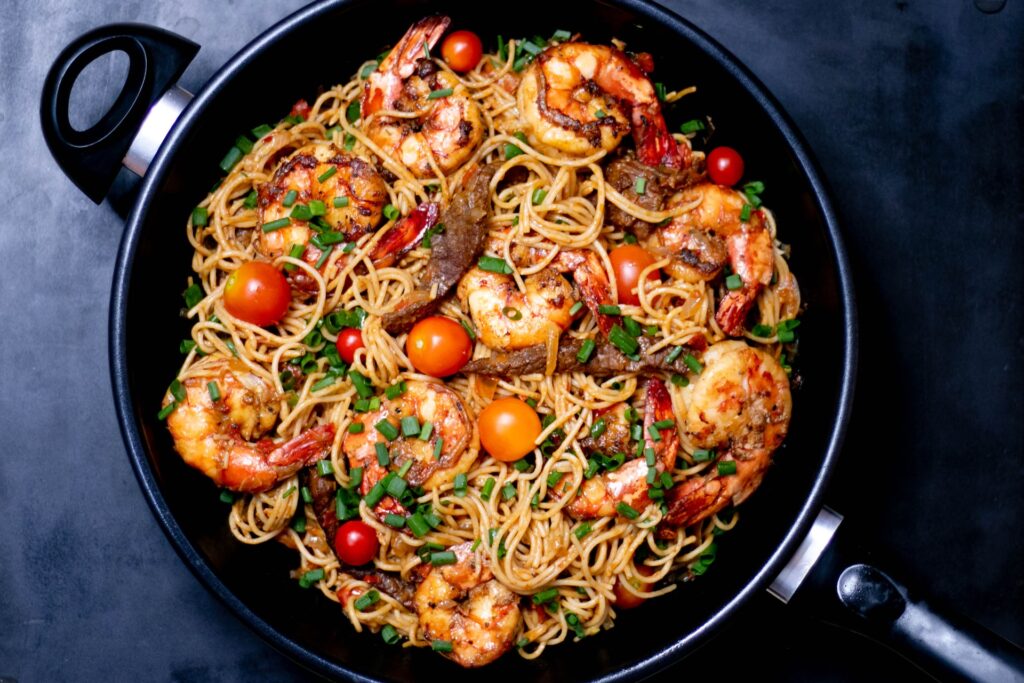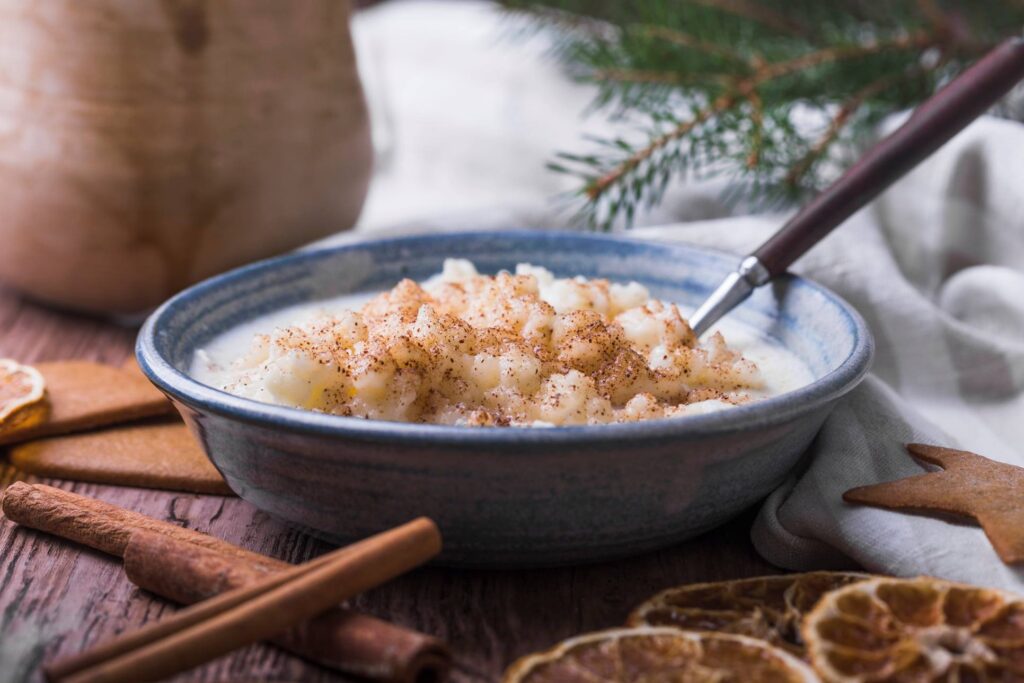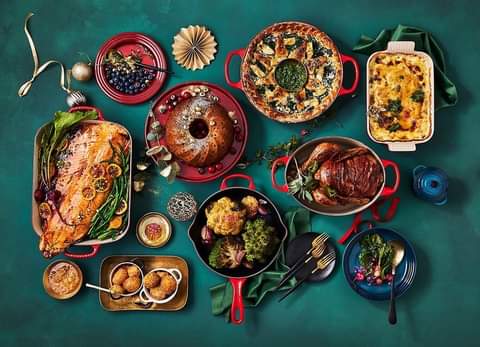We might still be finding ourselves with that satisfying and immobilising feeling of food overdose, due to the large plates of delicious items we have gradually assimilated over the last couple of weeks. However, those have probably been familiar meals we are accustomed to consuming at this time of year!
Although Christmas and the festive season is a time to revive and relive your roots and heritage, now it is over and we continue the digestion process, you might wonder what might have been happening in kitchens and on tables in other countries.
We did, and we are going to follow three meals while continuing our cultural journey around the globe to taste unfamiliar dishes and savour the diversity of other culinary traditions – for now only virtually, which is probably all we could manage anyway.

We start the day before
In some countries, the Christmas Eve meal is not even considered part of the Christmas menu. However, in the country where I was born and raised, as well as in all the main Catholic countries, this meal has an important religious connotation, and consequently an appropriate table needs to be prepared for the occasion.
ITALY
To combine the need to celebrate the night Jesus Christ was born with the financial restrictions on the modest income of rural families, the dinner on the 24th December only has fish on the menu.
Over time, the habit of eating fish – rather than meat, which is reserved for Christmas lunch – has been justified by the respectful custom of not eating meat before Christ was actually born. However, nowadays, the Christmas Eve dinner can be much more expensive than the lunch itself. In any case, the tradition to only eat fish has persisted over time and, religious or not, we all adore the procession of fish-based meals that appears during a minimum three-course dinner, since anything less would be considered offensive.

When it comes to food, Italy is again divided into its twenty administrative regions, whose common traits can be explained by their geographical proximity.
Spaghetti allo scoglio (seafood spaghetti) is a classic main course, with all’astice (lobster), being the more sophisticated and expensive version.
As a second dish, filetto di tonno (tuna fillet) and/or gamberoni (large prawns) are served; for a more modest version, you can have alici fritte (fried anchovies) and spiedini di gamberi (skewer of prawns). In central and south Italy it is a tradition, and rooted in deep layers of superstition particularly in Naples, to eat capitone (a large eel) as an act of good auspices for the approaching new year.

COLOMBIA
In this country, like many others in this continent, Christmas is a festivity introduced because of the Catholic religion, and it shows a strong influence from the Northern America tradition.
However, the buñuelos (cheesy fritters) are a very local tradition, especially in the Antioquia region, and its capital Medellín. People start eating them on 7th December and this carries on every night during the Novena de Aguinaldos until the Noche Buena (Christmas Eve in Spanish), after meeting for prayer and songs in different houses every evening.
La natilla is another very popular dessert and, of course, nationwide, the tamal, of pre-Columbian origins, is consumed daily throughout the year in the Andean region. The ingredients can vary a lot depending on which kind of fish, meat or vegetables is most available in that particular region; in any case, they are usually wrapped in plantain or bijao’s leaf.
CANADA
In a country of many different cultural backgrounds – including indigenous ones, which obviously don’t celebrate these festivities – we would just like to mention the tradition followed by those with French roots who celebrate the Réveillon, a huge feast that starts after the Christmas Evening Mass and continues into a party until the early hours of Christmas morning.
JAPAN
Here the atmosphere is completely different, where Christmas evening is more of a romantic celebration for couples than an occasion for family reunions. Walking through the streets of big cities you will be surprised to find pairs in love taking pictures of themselves and exchanging presents for what is their equivalent of a western St Valentine’s day, before heading to one of the fully-booked restaurants, reserved months in advance.

CAPE VERDE
In this archipelago of the Atlantic Ocean, Christmas is the time when people come back home from the different countries they live in while studying and working. Family homes are full again, filled with the voices that for months were heard only over the phone. Reunited again, after the Christmas Mass – a Missa do Galo (the Cockrel’s Mass, in English) –different generations of the family sit at the table for the Consoada, an important dinner that is prepared during the whole day.
In more recent times, due to the Portuguese influence, primarily in the urban centres of the islands, the main meal has become the bacalhau (salted coldfish), served with vegetables and roast turkey; however, in the rural areas they continue to serve the traditional cabritada, a goat-based dish, (from cabrito, little goat in English).
Other dishes are served according to different local traditions of the islands.
We continue when the sun rises...
In Sweden there is a tradition that breakfast is served in bed by the oldest daughter of the house, dressed strictly in white.
In Belgium they eat cougnou, ‘the bread of Jesus’, a sweet bread shaped like a little new-born baby and decorated with grains, raisins, and chocolate chips – it is dipped by children into their hot chocolate mug in the morning.
In the land of Joulupukki (Father Christmas), instead the tradition is a rice porridge called riisipuuro, served with plum juice. It’s eaten all year around in Finland but is filled with almonds on a special occasion for good luck.


RWANDA
For breakfast here you will be drinking a beverage that could be made from wheat, maize or sorghum (a kind of millet), but without any sugar.
UGANDA
Here, as in several African countries, it is a tradition to drink beer made locally in an artisanal way from sorghum. However, for Christmas breakfast there will also be katongo, which is matoke (a type of banana and a staple food here) mixed with meat or a paste of ground up nuts and served with vegetables. Other options for breakfast are mandazi (a sweet dish) or samusa (a savoury dish).
...and we gather around the table (again)
MEXICO
Since 1528 when the first Christmas was celebrated there, one of the traditional dishes for the lunch is the pierna (foot) or lomo (loin) of pork, cooked in the oven, having previously been marinated in abodo, a thick sauce made of dried chillies (specifically, ancho, guajillo and pasilla), with a combination of spices and vinegar.
SOUTH AFRICA
Christmas lunch here is a communal moment, so it won’t be a surprise that different members of the same family gathered around the same table will bring different dishes to be shared with the others.
Since from the end of December, in this part of the world, they experience very hot weather, the menu consists of a combination of hot and cold dishes, among which, as a starter, there is always space for a curry and rice, and a prawn or fish salad. As a main course, you will usually see a combination of four or five different types of meat, such as lamb, beef, duck, chicken, turkey and gammon, served with green and cold slaw salads.

I have also heard about their notorious truffle (colloquially called ‘infamous’ due to the amount of calories hidden between the layers), which is a layered sponge cake stuffed with jelly and custard cream, and topped with chocolate flakes.
More sweets will be served after Mass, with an afternoon tea when other friends, community members and neighbours pass by to bring their regards, together with their puddings.
On the 26th and for 2-3 days afterwards, no one will need to cook, as they will just consume all the leftovers from that single day.
KENYA
Lunch comes after a light breakfast of tea and chapatis or mandazi (the same as you will find in Tanzania and Uganda, apparently of Swahili origin). Beef tripe stew is the main dish and is cooked with liver, lungs and kidneys and can be accompanied by ugali (maize food) or steamed rice.
JAMAICA
Christmas lunch here is prepared the day before, on Christmas Eve, before heading to the ‘Grand Market’. After a breakfast of ackee and saltfish, fried plantains and boiled bananas, the main space is reserved to turkey, chicken, goat curry and stewed oxtail, and a guaranteed portion of rice and peas.
As a dessert, red wine and rum fruitcake will crown the festive feast, after being soaked for months in a local spirit.
GREECE
After having listened to the kalauda (carols) in the streets, and eaten pastries as a starter, lunch will be served. Usually, lamb or pork served with a spinach and cheese pie. More sweets, like the melomakarono, will come as a dessert.

With our eyes and bellies full of love both for our own and the less familiar mouth-watering traditions, and the warm celebrations around the table and in the cosiness of family homes, we are now ready to start the new year with a broader consciousness and perhaps with some curiosity and a new list of recipes to try.
After ending this brief cultural and culinary journey around the world, we would like to send you our warm wishes with a colourful reminder of the global diversity we are so proud to celebrate through tourism.
Happy New Year!
Buon Anno!
Feliz Ano Novo!
¡Feliz año nuevo!
Bonne année!
Frohes Neues Jahr!
Ευτυχισμένο το νέο έτος!
Umwaka Mushya Muhire!
Heri Ya Mwaka Mpya!
Hyvää Uutta Vuotta!
Tabaruka Omwaka!
Words by Elisa Spampinato


Recent Posts
Categories